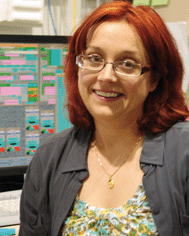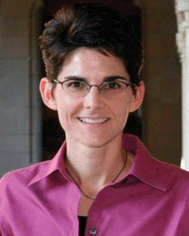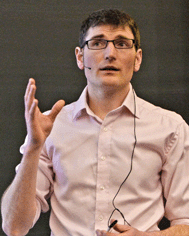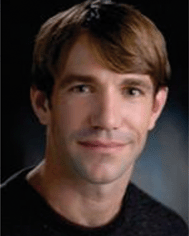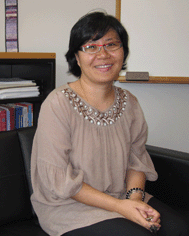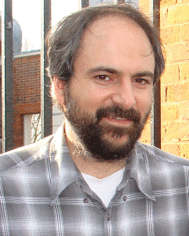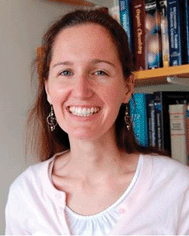Editorial “metallomics: emerging investigators”
In this issue, we highlight the exciting work a few emerging investigators are doing in the field of metallomics. Perhaps because metallomics is itself an emerging field, young investigators are having a powerful impact.Metallomics shares with other emerging fields—including genomics, proteomics, and neuroscience—an interest in understanding big pictures and complex wholes. For that reason, metallomics requires a systematic approach and the desire and ability to integrate information, often across disparate fields. Integration often requires researchers to take an interdisciplinary approach. The scope of Metallomics—the journal—makes clear the interdisciplinary nature of the field.
Metallomics touches on many areas of science that profoundly impact society, including biogeochemistry and environmental chemistry, clinical chemistry and pharmacology, and nutrition and health.1 For many younger scientists, its focus on issues of social importance adds to its appeal.
As with all attempts to study complex phenomena, a big part of the challenge is, you might say, epistemological. It's about understanding what it means to know something and how that might be achieved: how to measure something against a complex background, or how to think about and express what is occurring in a dynamic setting. This is difficult work, and it requires new tools that have undergone rigorous testing and a critical examination of how they function. Analytical chemistry and imaging have featured prominently in many of the articles this journal has published. Several of the emerging investigators featured in this issue are developing new methodologies with which to study the metallome.
The Royal Society of Chemistry and RSC Publishing places much value in encouraging younger researchers and promoting their work, as can be seen from the many Emerging and Young Investigator themed issues across RSC journals, including Chemical Communications and Journal of Analytical Atomic Spectrometry. In this issue, Metallomics has taken the opportunity to recognize an emerging generation of scientists.
While emerging scientists are the special focus of this issue, presenting their work is nothing new for Metallomics, which has published exciting work from young investigators throughout its nearly 4-year history. This issue only captures a small snapshot of that work. While we had no firm criteria for distinguishing between emerging and established scientists, we have focused primarily on investigators in the first 10 years of their independent careers.
This issue includes articles from the following researchers.
Katherine (Kathy) Franz is an associate professor of chemistry at Duke University. Appointed in 2003, she and her lab have since focused on developing prochelators, molecules that can chelate metal ions after a chemical transformation, which ideally can be triggered at the site where binding is desired. Her lab has also done a lot of work to understand mechanisms of copper uptake in cells and to utilize knowledge of copper binding motifs to develop copper probes. She was the recipient of the Camille Dreyfus Teacher-Scholar Award in 2009, an Alfred P. Sloan Research Fellow in 2008, an ACS PROGRESS/Dreyfus Lectureship Award in 2007, and an NSF CAREER Award in 2005.
Franz's paper “Prochelator BHAPI protects cells against paraquat-induced damage by ROS-triggered iron chelation” describes the in vivo utilization of a prochelator to bind iron after activation by hydrogen peroxide. This single molecule can thereby act both as an antioxidant and as a chelator for metal ions, and prevent two potentially detrimental chemical species from reacting. This molecule does not bind iron in its prochelator form, so it does not induce iron deficiency in healthy cells.
Kathy has published in Metallomics two other papers, which report some of her work on the cellular biology of copper, including “Coordination of platinum therapeutic agents to met-rich motifs of human copper transport protein 1” (Metallomics, 2010, 2, 74–83) and “A comparison of methionine, histidine and cysteine in copper(I)-binding peptides reveals differences relevant to copper uptake by organisms in diverse environments” (Metallomics, 2011, 3, 61–73).
His paper, “X-ray reduction correlates with soaking accessibility as judged from four non-crystallographically related diiron sites,” draws attention to the challenges of assigning oxidation states – a critical piece of information for any metalloprotein – from X-ray data, and provides evidence to support the hypothesis that solvent accessibility is correlated with ease of photoreduction. This paper is a follow-up to his 2011 review article, “Metal use in ribonnucelotide reductase R2, di-iron, di-manganese and heterodinculear – an intricate bioinorganic workaround to use different metals for the same reaction” (Metallomics, 3, 110–120).
His paper “Dual-function triazole-pyridine derivatives as inhibitors of metal-induced amyloid-β aggregation” in collaboration with Mi Hee Lim at the University of Michigan, illustrates how understanding coordination chemistry facilitates the design of ligands that can bind metals and, as demonstrated in this paper, diminish the degree of Aβ aggregation. Understanding how metal ions function in pathological conditions can facilitate bioinorganic treatment strategies. Tim has also recently contributed to a New Talent: Americas issue in Dalton Transactions.
Mi Hee has previously contributed to a themed issue in Metallomics on Neurodegenerative Diseases. “Synthesis and characterization of IMPY derivatives that regulate metal-induced amyloid-β aggregation” (Metallomics, 2011, 3, 284–291).
Hua Naranmandura is an associate professor in the Department of Pharmacology, Toxicology, and Biochemical Pharmaceutics in the College of Pharmaceutical Sciences and Zhejiang University, in China. He did his doctoral work at Chiba University in Japan and then a post-doctoral fellowship at the University of Alberta.
His paper, “Arsenic metabolism and thioarsenicals,” reviews what is known about arsenic metabolism and supports his hypothesis that arsenic methylation occurs via a reductive pathway in which As(III) is bound to proteins. In this novel model, oxidation to As(V) is thought to occur when As is released from proteins, and occurs only during the final step of arsenic metabolism.
Some earlier work on arsenic metabolism was reported in a 2011 Metallomics paper, “Generation of thioarsenicals is dependent on the enterohepatic circulation in rats” (Metallomics, 2011, 3, 1064–1073).
Her paper, “Siderophore-based detection of Fe(III) and microbial pathogens,” shows scientists how to exploit the exquisite sensitivity with which siderophores bind iron—and receptors bind siderophores—to develop platforms for fluorescence-based iron detection and pathogen sensing. She is a first-time contributor to Metallomics.
All these papers ask bold questions and engage difficult issues, and the courage of these scientists to take them on is inspiring. This field offers many exciting opportunities to investigators at various stages of their careers, if they are willing to think about in a systems-focused way and to do the careful work required to extract meaningful information from complex and often data-intensive experiments. Metallomics is delighted to provide a visible home for these compelling new investigations and investigators.
Professor Rachel Austin, Bates College, USA.
Editorial Board member, Metallomics.
References
- R. Lobinski, J. Sabine Becker, H. Haraguchiand and B. Sarkar, Pure Appl. Chem., 2010, 82, 493–504 CrossRef CAS.
| This journal is © The Royal Society of Chemistry 2012 |

